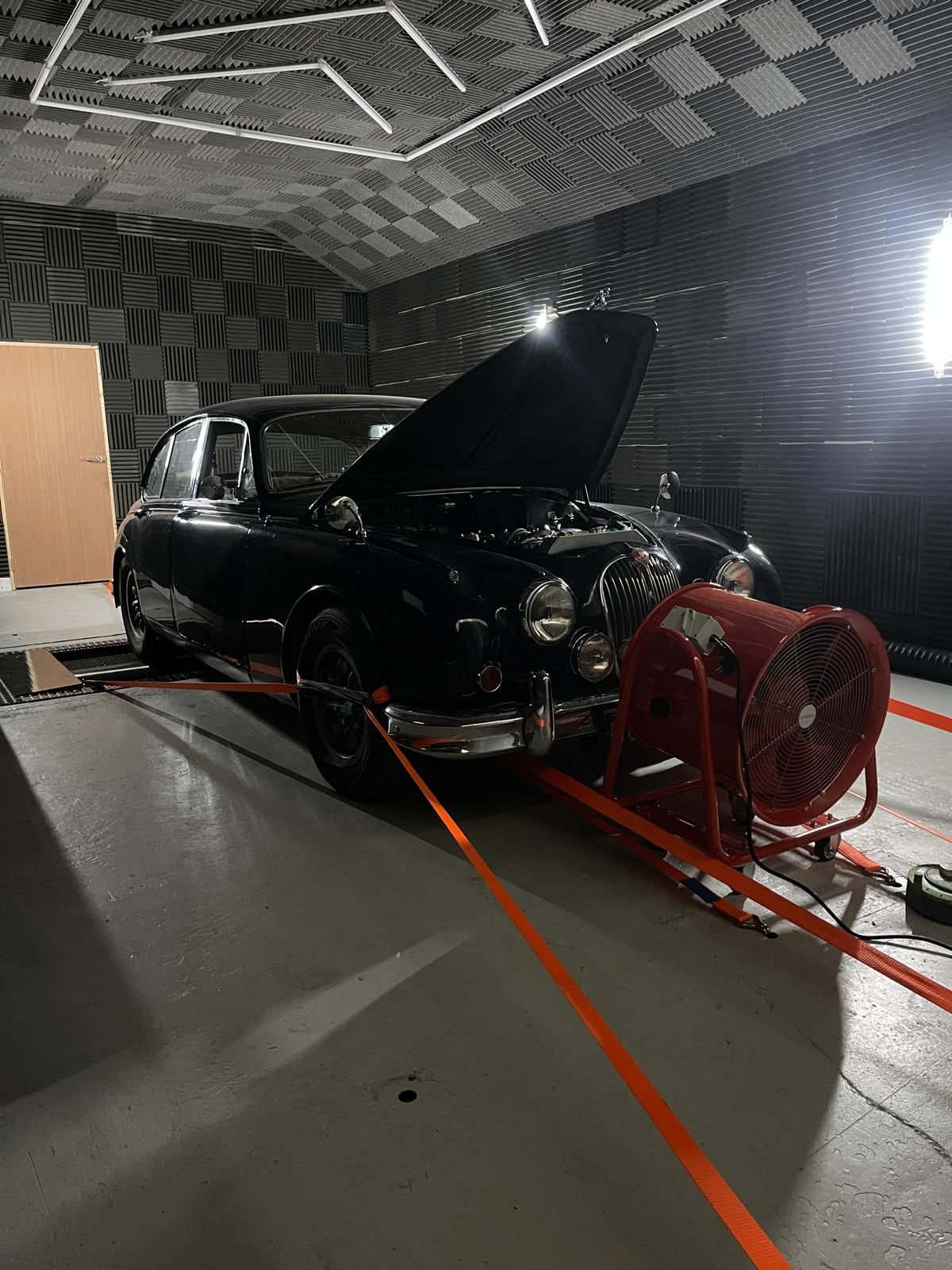Rolling Road.
ROLLING ROAD DIAGNOSTICS. A lot of the time engine modifications or an in-depth problem will only affect performance for a short period of time or at a certain rev, the rolling road is the ideal tool for diagnosing this - as you are able to hold consistent load or revs for longer than is permissible on the road in order to test different solutions, or make difference changes to increase performance! We have recently invested in our state of the art 2 wheel drive rolling road all incorporated in a beautiful sound proof enclosure so our perfecting setting in rural Nottinghamshire is not disturbed by the symphony of our classic engines.
P&K Thornton Restorations have been at the forefront of classic Jaguar performance tuning since it was founded in 1967, benefiting from our rich experience and fine listening ears for the sound of engines, we took one step forward and added the precise engineering tool that is the rolling road to our range of services.
How do P&K Thornton Restorations use the rolling road
Overheating is the primary issue with a high-performance classic car on the road. We use a combination of cooling fans that blow air into the radiator and under the car and an extractor fan that pulls exhaust gases away and out of the building behind the car to handle a car under load on a rolling road. To prevent cars from driving out of the rollers, they must all be secured.
To help us tune the car, we use particular meters. In order to check voltage ranges, we attach an oscilloscope to the engine electrics and a lambda sensor to the exhaust that has a display that can be read from the driver's seat. We aim to maintain optimal oxygen levels in the exhaust gases by measuring them in this way. We are able to electronically adjust fueling and ignition timing on engines that have aftermarket engine management systems, such as MBE, Omex, DTA, and so on, in order to increase BHP and enhance fuel economy.
On engines with carburettors, we must alter the fuel by adjusting needles, jets, emulsion tubes, air correctors, and other components on Weber-style carbs or S.U. carbs. Typically, moving the distributor advance curve can be used to change the ignition timing.
A typical tuning session at P&K THornton Restorations
After examining the fundamentals, such as the condition of the oil and water tyres, we will install the car on the rollers and strap it down. In order to secure any classic vehicle, we have numerous tie down points anchored in the perfectly flat floor. There are no issues with ground clearance because the driven wheels sit on top of the roller rather than in a cradle made of two rollers. We will utilise equipment for measuring exhaust gas and equipment for .
The dyno records the boost and fueling, which can be compared to power and torque to aid in tuning. We chose a sunk-in-the-floor dyno with large rollers to ensure more accurate readings by reducing tyre spin and overheating to zero. In order to ensure that all of the readings we get are accurate, we now gently warm the dyno as well as the engine and transmission. Additionally, this ensures that the engine is prepared for running at high rpm and full throttle. This is mostly for performance and competition engines, and we will always adhere to any restrictions you place on engine rpm or throttle opening.
Additionally, we use the dyno to test brand-new engines in a controlled setting. We now use the dyno in both steady state and transient modes to find and fix any problems with the calibration. In addition to carburettor service parts, chokes, and emulsion tubes, we have a huge selection of Weber, DellOrto, and SU jets and needles. We are experts in modern engine management systems in addition to having a wealth of experience with carburetors and vintage and classic cars.
For all your classic car tuning requirements, road or race, contact us in advance!



